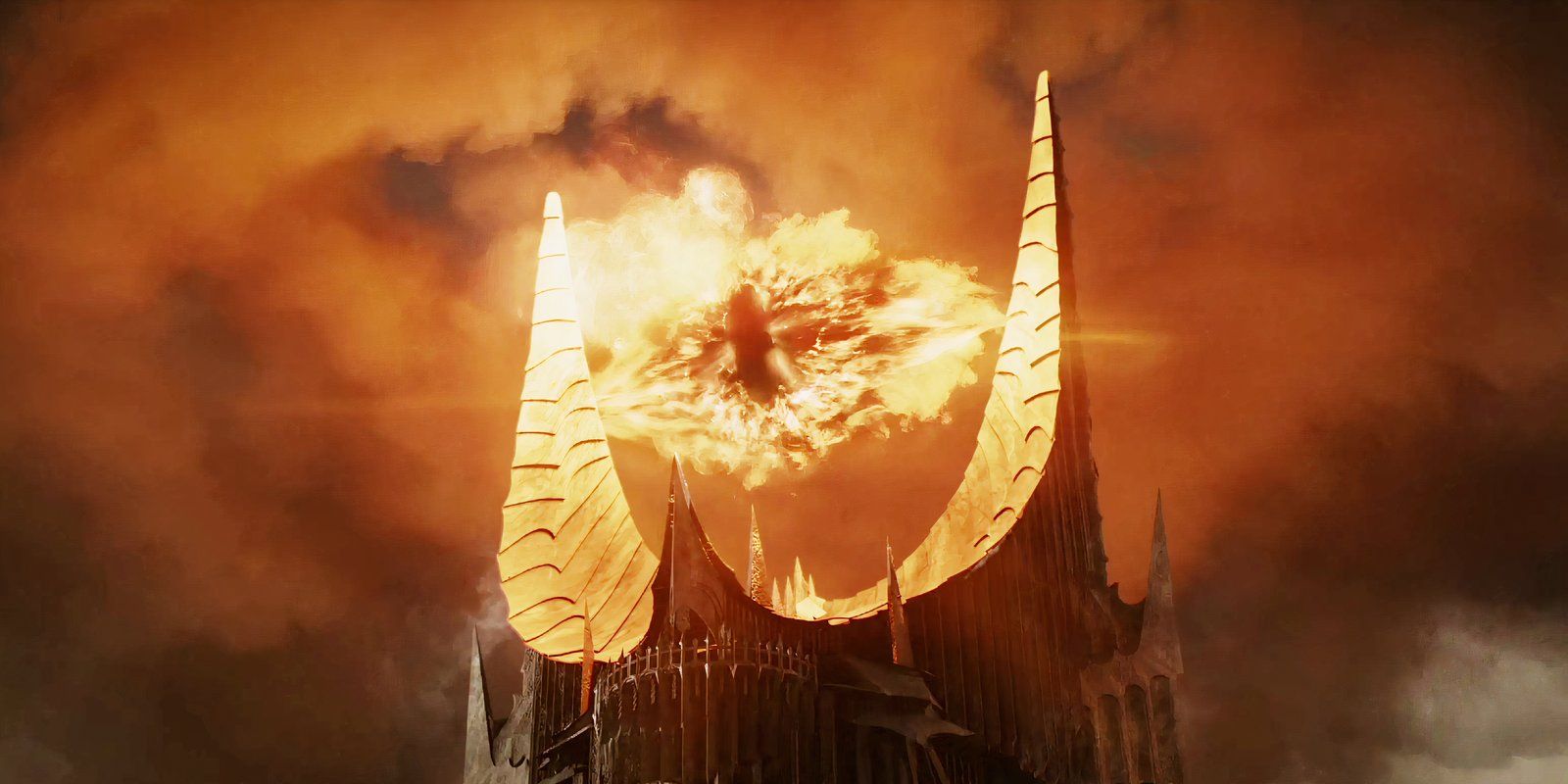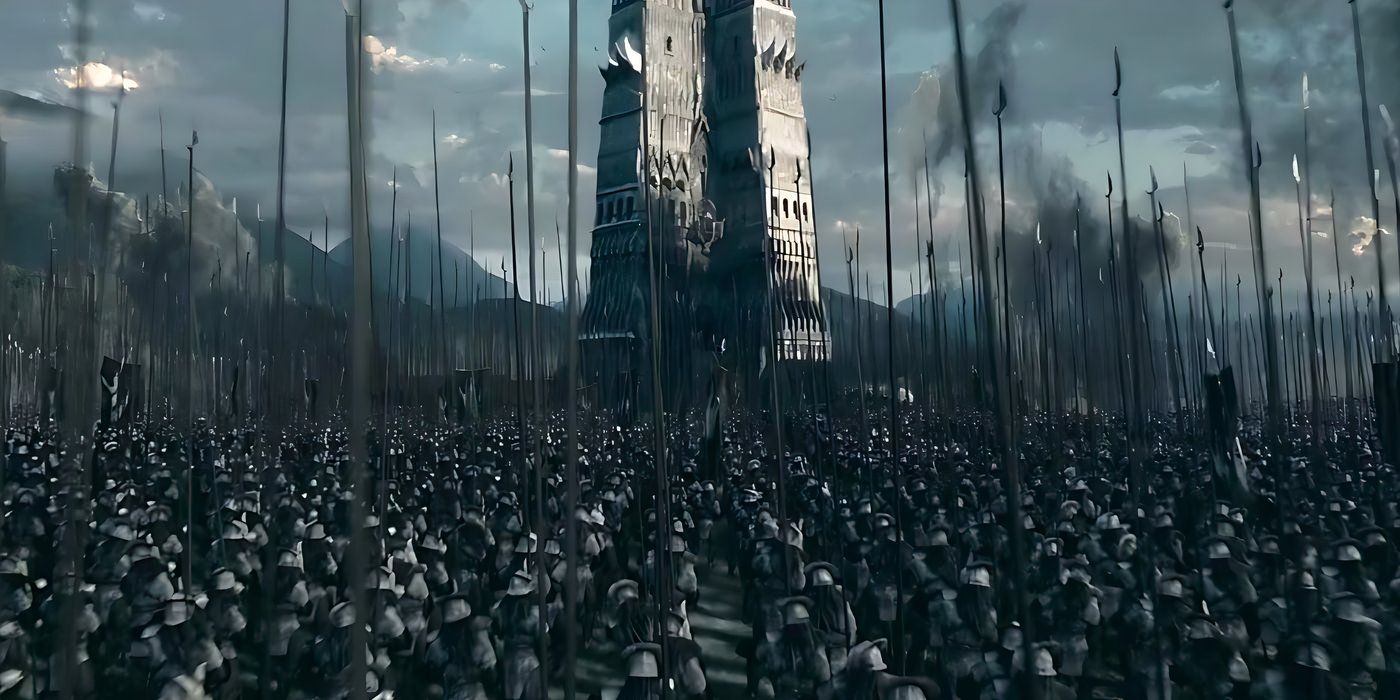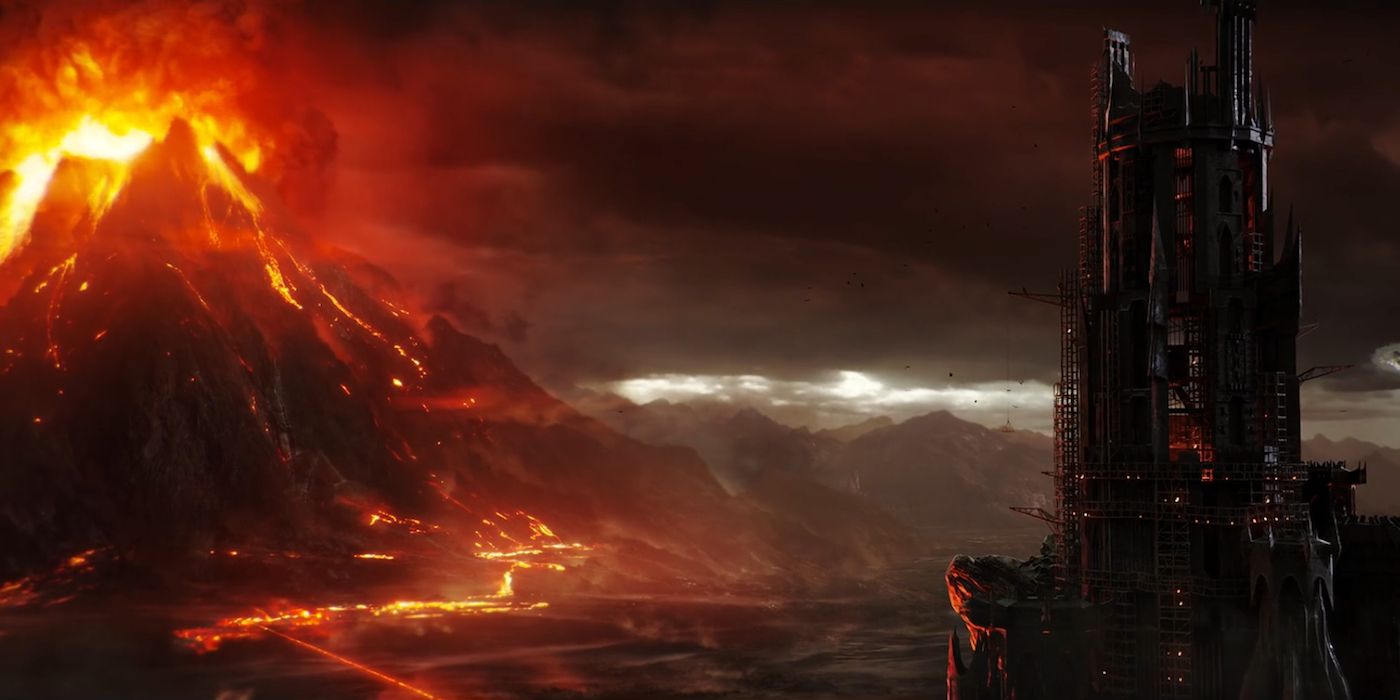After watching The Lord of the Rings trilogy, viewers may be left wondering what, exactly, the titular two towers are in relation to Middle-earth’s dense history and lore. The structures are important enough to be referenced in the subtitle of the trilogy’s second film, The Lord of the Rings: The Two Towers. In adapting J.R.R. Tolkien’s novel of the same name, The Two Towers chronicles three storylines: Frodo and Sam’s One Ring-destroying journey toward Mordor; Merry and Pippin’s meeting with Treebeard the Ent; and Aragorn, Legolas, and Gimli’s run-in with the fractured kingdom of Rohan.
Memorably, The Two Towers culminates in Peter Jackson’s iconic Battle of Helm’s Deep, which sees a resurrected Gandalf, the other Fellowship members, and Rohan’s soldiers coming to blows with the armies of the treacherous wizard Saruman, who desires the Dark Lord Sauron’s power — and control of Middle-earth — for himself. While The Lord of the Rings: The Fellowship of the Ring provides some insight into the multi-sided war unfolding in Tolkien’s Lord of the Rings, The Two Towers delves more deeply into the many antagonistic, power-hungry forces at play in Middle-earth.
“The Two Towers” Refers To Sauron’s Barad-Dûr & Saruman’s Tower Of Orthanc
Both Towers In The Lord Of The Rings Are Key Strongholds During Middle-Earth’s Third Age

The Lord of the Rings‘ trilogy’s titular “two towers” include Sauron’s Barad-Dûr and Saruman’s Tower of Orthanc. The former, Barad-Dûr, is the Dark Lord Sauron’s central stronghold in Mordor. During the Second and Third Ages, the so-called “Dark Fortress” is not only his seat of power, but an imposing manifestation of Sauron’s might. During his initial efforts to seize control of Middle-earth, Sauron adopted the symbol of The Eye. In Peter Jackson’s Lord of the Rings movies, the apex of Barad-Dûr contains LOTR‘s flaming Eye of Sauron — visible and piercing, though perhaps not tangible.
The imposing tower stands in the middle of the so-called Ring of Isengard — a defensive wall constructed by the Men of Gondor…
Throughout the timeline of The Lord of the Rings, the Tower of Orthanc has served many different purposes, but, during the film trilogy’s War of the Ring, it serves as the seat of power for Saruman. The imposing tower stands in the middle of the so-called Ring of Isengard — a defensive wall constructed by the Men of Gondor long before the dark wizard’s reign. Supposedly, no weapon — or even magical ability — in all of Arda could penetrate the fortress, making the Tower of Orthanc an incredibly secure outpost for Saruman and his armies.
The Origins Of Barad-Dûr & The Tower Of Orthanc Explained
Both Structures Predate The Lord Of The Rings Book

Both Barad-Dûr and the Tower of Orthanc were constructed long before the events showcased within The Lord of the Rings movies. Originally built during the Second Age, Sauron’s Barad-Dûr was leveled when the Dark Lord was defeated in the War of the Last Alliance. Sustained by dark magic, the tower was rebuilt during the Third Age as Sauron gained power again. Notably, Sauron’s orcs torture Gollum in Barad-Dûr, hoping to glean information about the One Ring’s location before The Fellowship. Isengard’s Orthanc, on the other hand, was likely built around the time Arnor and Gondor were established.
What The Two Towers Symbolize In The Lord Of The Rings
Barad-Dûr & Orthanc Reflect Their Owners’ Brand Of Evil

In Lord of the Rings, the two towers symbolize different manifestations of evil. In his trilogy of novels, Tolkien explores the nature of good versus evil, but he doesn’t overly simplify the latter. First, Sauron, who forges the Rings of Power and becomes Middle-earth’s second dark lord, is written as a kind of darkness that exists — and persists — in the world no matter what. On the other hand, Saruman has been corrupted — twisted by wickedness. Each antagonist’s tower reflects their own villainy: Orthanc predated Saruman and wasn’t always associated with evil, while darkness birthed Barad-Dûr.


